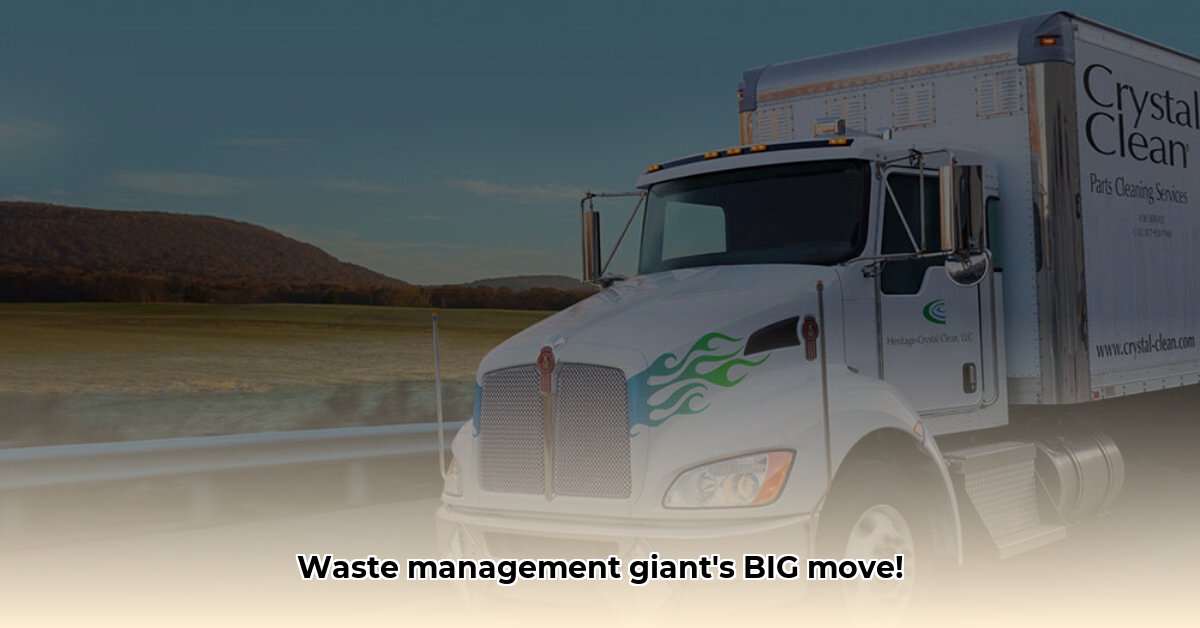
Envirosafe Services: Crystal Clean's Acquisition and Its Ripple Effects
Crystal Clean, a leading hazardous waste management company, has acquired Envirosafe Services of Ohio (ESOI), marking a significant shift in the regional waste management landscape. This acquisition isn't merely a business transaction; it represents a strategic move with far-reaching implications for various stakeholders, including clients, competitors, and regulatory agencies. The merger promises increased efficiency and potentially improved environmental practices, but it also presents challenges related to integration and regulatory compliance. How will this acquisition reshape the competitive dynamics of the hazardous waste industry?
A New Chapter for Envirosafe Services
For ESOI, the acquisition signifies a transition to a larger parent company with greater resources. While clients might experience short-term adjustments, such as revised billing procedures, Crystal Clean has pledged investments in infrastructure and technology upgrades. This suggests enhanced service efficiency, potentially including faster turnaround times and streamlined invoicing. The long-term outlook suggests expanded service capabilities and the adoption of more environmentally sustainable waste disposal methods. Will these changes translate into tangible benefits for long-term customers?
Market Dynamics: A Changing Landscape
Crystal Clean's acquisition of ESOI has sent ripples through the hazardous waste management industry. The immediate impact on competitors remains to be seen, but it's likely to trigger a reassessment of market strategies. Will smaller firms face increased pressure, leading to further consolidation? How might pricing structures evolve in response to the increased market concentration? These questions underscore the need for ongoing analysis of the industry's competitive dynamics in the aftermath of this significant merger.
Navigating the Regulatory Maze
The hazardous waste management sector operates under stringent regulations. Crystal Clean's acquisition of ESOI necessitates meticulous adherence to existing environmental laws and permits. Expanding services or altering operational procedures will require navigating a complex regulatory landscape. Compliance failures could result in substantial penalties, reputational damage, and operational disruptions. Maintaining a strong track record of regulatory compliance will be paramount for the continued success of the merged entity.
The Acquisition's Impact: A Stakeholder Analysis
The long-term effects of the acquisition necessitate a careful evaluation of its impacts on key stakeholders. Below is a summary of potential benefits and drawbacks:
| Stakeholder Group | Potential Upsides | Potential Downsides |
|---|---|---|
| Crystal Clean | Increased market share, operational efficiencies, enhanced service offerings | Integration challenges, regulatory complexities, potential for unforeseen costs |
| Envirosafe Services Clients | Improved service efficiency, potentially broader service options | Short-term disruptions, uncertainty regarding pricing changes |
| Competitors | Opportunities to attract customers seeking alternatives | Increased competition from a larger, more consolidated entity |
| Regulatory Agencies | Potential improvements in environmental protection and compliance | Increased oversight demands and monitoring requirements |
Ensuring Regulatory Compliance Post-Acquisition: A Strategic Approach
The acquisition of ESOI necessitates a robust and proactive approach to regulatory compliance for Crystal Clean. This involves a multi-faceted strategy encompassing pre-acquisition due diligence and ongoing compliance management. Failing to manage this crucial aspect effectively could lead to substantial financial penalties and reputational damage. How can Crystal Clean ensure a smooth and compliant integration?
Pre-Acquisition Due Diligence: A Critical First Step
Before the acquisition was finalized, thorough due diligence should have been undertaken. This process involves a comprehensive review of ESOI's environmental compliance history, including:
- Environmental Audits: Independent reviews of ESOI's facilities to identify any past violations or ongoing compliance issues.
- Permit Review: Verification of the validity and up-to-dateness of all relevant permits and licenses.
- Hazardous Substance Inventory: A detailed inventory of all hazardous materials handled by ESOI to ensure proper accounting and management.
- Liability Assessment: Identification and quantification of potential environmental liabilities associated with ESOI's operations.
Post-Acquisition Integration: A Unified Compliance Framework
Following the acquisition, a seamlessly integrated compliance framework is critical. This involves:
- Records Consolidation: Centralizing all environmental records into a unified, easily accessible system.
- Employee Training: Implementing comprehensive training programs to ensure all employees understand their roles in maintaining compliance.
- Standardized Operating Procedures: Harmonizing operating procedures across all sites to guarantee consistent compliance.
- Ongoing Monitoring: Establishing a robust monitoring system to proactively identify and address potential compliance issues.
Leveraging Technology and Best Practices
Maintaining compliance in the dynamic hazardous waste industry necessitates continuous improvement and the adoption of advanced technologies. This includes:
- Technological Investments: Utilizing modern waste management and tracking technologies to streamline record-keeping and enhance operational efficiency.
- Continuous Improvement Programs: Establishing a culture of continuous improvement in environmental performance.
- Regulatory Updates: Staying informed about changes in environmental regulations and adapting practices accordingly.
Proactive Risk Management: Mitigating Potential Liabilities
A proactive risk management strategy is paramount in mitigating potential environmental liabilities. Key elements include:
- Risk Assessments: Regular assessments of potential environmental risks and the development of comprehensive mitigation plans.
- Emergency Response Planning: Establishing detailed emergency response plans to manage unexpected events, such as spills or equipment failures.
- Insurance Coverage: Securing adequate environmental liability insurance to protect against unforeseen costs.
This acquisition presents both opportunities and challenges. Successful integration will depend heavily on Crystal Clean’s ability to manage the transition effectively, prioritize regulatory compliance, and maintain transparent communication with all stakeholders. The long-term success of this merger will ultimately be a testament to the company’s commitment to responsible environmental stewardship and operational excellence.